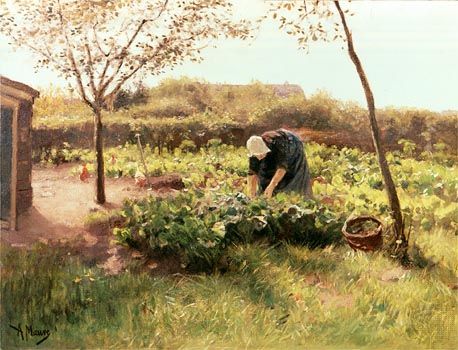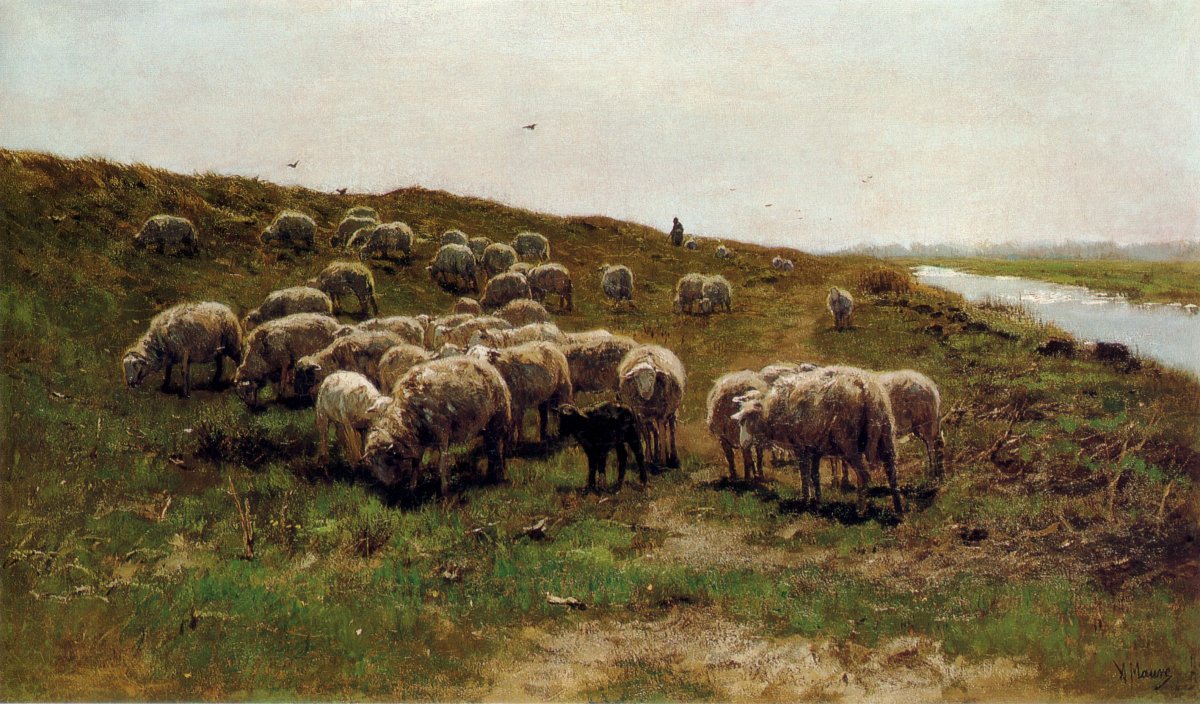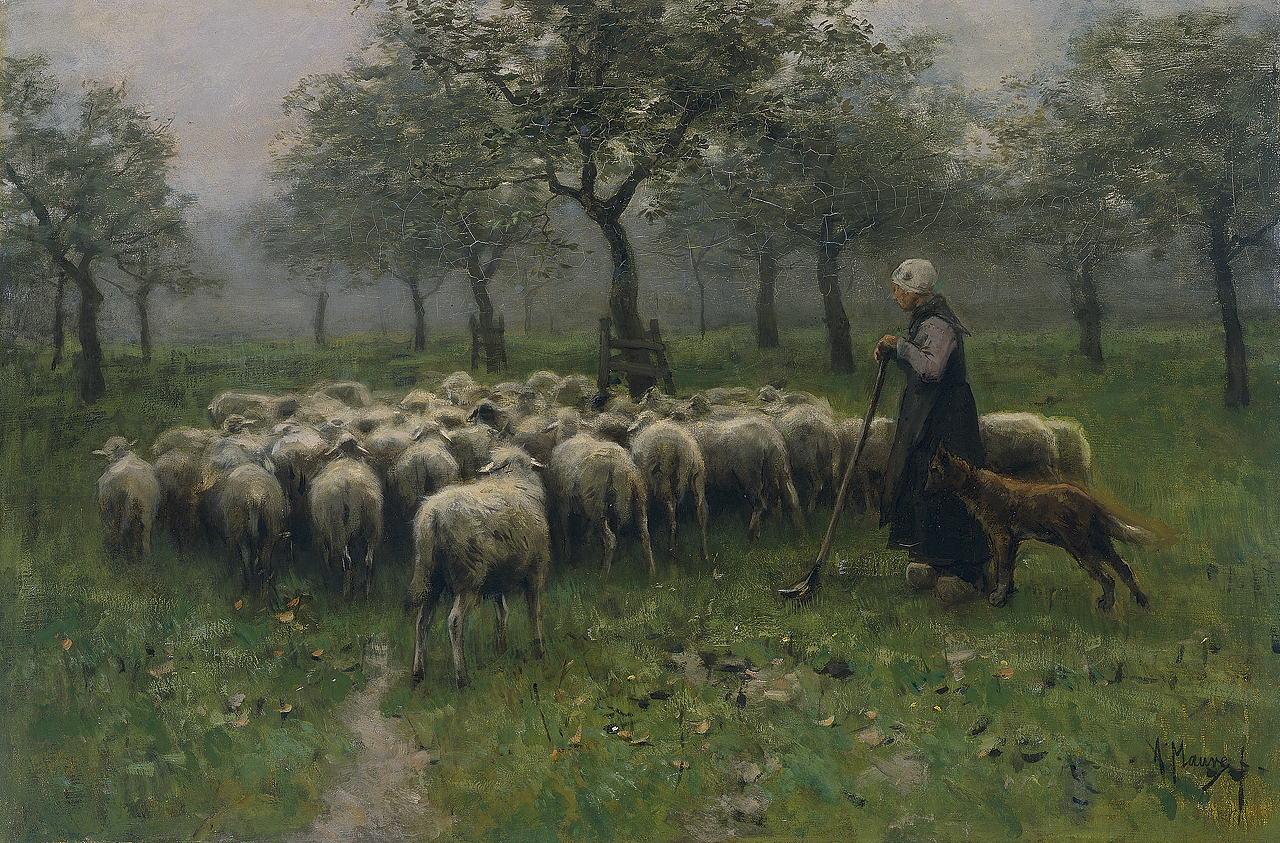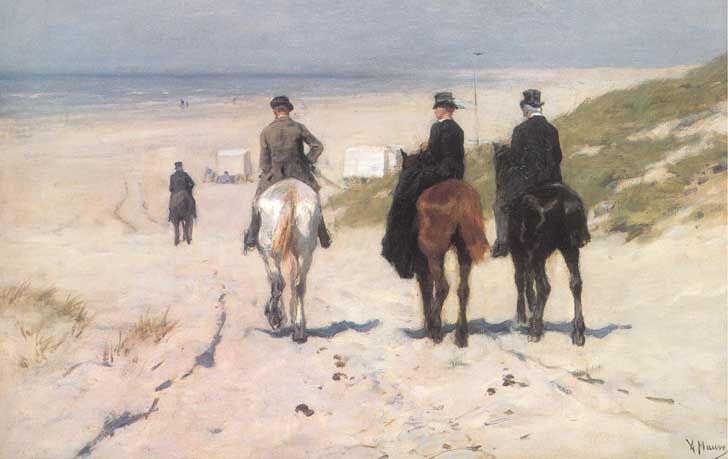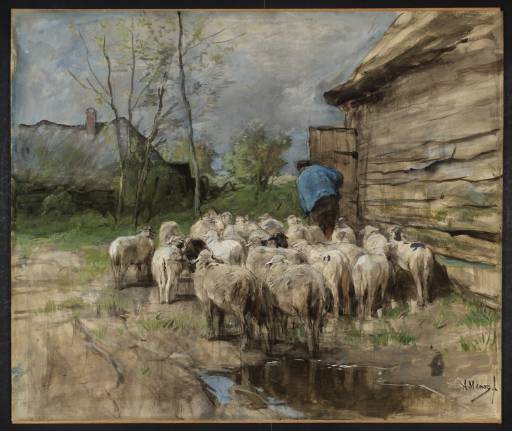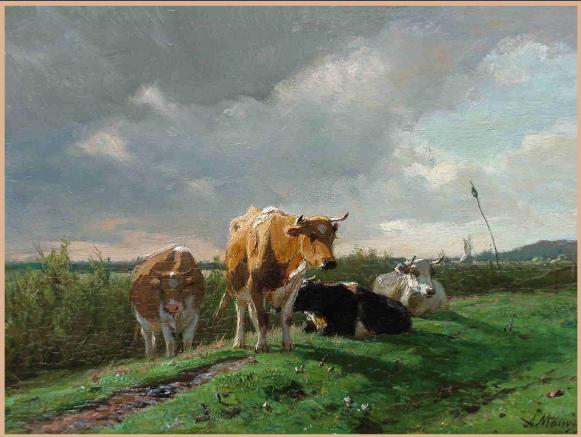<Back to Index>
- Mathematician Adrien Marie Legendre, 1752
- Painter Anton Rudolf Mauve, 1838
- Prime Minister of Canada John George Diefenbaker, 1895
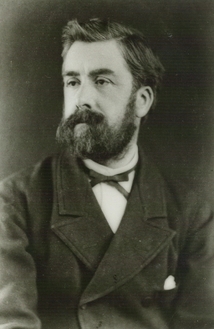

Anton Rudolf Mauve (18 September 1838 – 5 February 1888) was a Dutch realist painter who was a leading member of the Hague School. He is now best known for his influence on the early work of his cousin-by-law Vincent van Gogh.
Mauve was born in Zaandam into the family of a Baptist preacher, who was sent to Haarlem a year after Anton's birth. His early work can be attributed to the Hague School. When Mauve moved to Laren in 1886, he was one of the founders of the Laren School, with Jozef Israëls and Albert Neuhuys.
Much against the wish of his parents he took up the study of art and entered the studio of Pieter F. van Os, whose dry academic manner had, however, but little attraction for him. He benefited far more by his intimacy with his friends Jozef Israels and Willem Maris. Encouraged by their example he abandoned his early tight and highly finished manner for a freer, looser method of painting, and the brilliant palette of his youthful work for a tender lyric harmony which is generally restricted to 'delicate greys, greens, and light blue. He excelled in rendering the soft hazy atmosphere that lingers over the green meadows of Holland, and devoted himself almost exclusively to depicting the peaceful rural life of the fields and country lanes of Holland - especially of the districts near Oosterbeek and Wolfhezen, the sand dunes of the coast at Scheveningen, and the country near Laren, where he spent the last years of his life. A little sad and melancholy, his pastoral scenes are nevertheless conceived in a peaceful soothing lyrical mood, which is in marked contrast to the epic power and almost tragic intensity of J.F. Millet. There are fourteen of Mauve's pictures at the Museum Mesdag at the Hague, and two (Milking Time and A Fishing Boat putting to Sea) at the Rijksmuseum in Amsterdam.
Most of Mauve's work shows people and animals in outdoor settings. In his Morning Ride in the Rijksmuseum, fashionable equestrians at the seacoast are seen riding away from the viewer. An unconventional detail — horse droppings in the foreground — attests to his commitment to realism. His best known paintings depict peasants working in the fields, and especially sheep herding scenes. His paintings of flocks of sheep were especially popular with American patrons. Examples of his work include Changing Pasture (ca. 1880s) and Entering the Fold (ca. 1885-1888).
The young van Gogh worked under him for a short period, until they had a quarrel. Mauve respected van Gogh's talent, but insisted that he develop traditional skills in drawing and modelling.
Mauve died of an aneurysm in 1888, in Arnhem.

